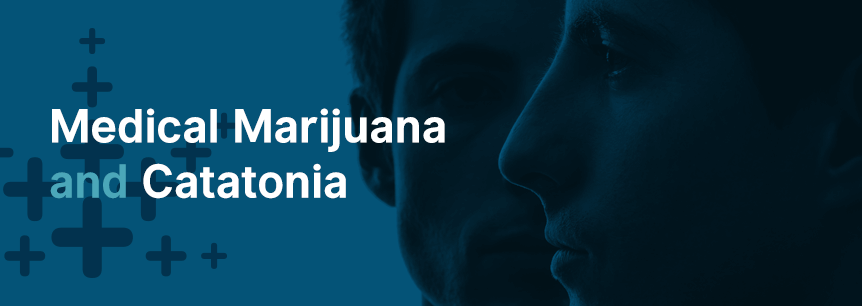
Doctors associate catatonia with schizophrenia and other mental illnesses. As you may know, mental illness can impact your quality of life. There’s feeling sad every day, appetite changes, difficulty concentrating, fatigue, depression, sleep issues, and many other symptoms you can experience with mental illnesses.
You want relief, and while there are treatments available to tackle these symptoms, they often come with harsh side effects. Many patients are now exploring medical cannabis for catatonia and are experiencing good results.
Catatonia is an abnormal neuropsychiatric illness affecting both motor function and behavior. An individual experiencing catatonia appears to be awake but is unresponsive.
There are three types of catatonia:
Catatonia has an association with mental illnesses such as:
However, physicians see numerous other reasons for catatonia ranging from psychiatric causes to an overabundance of medical illnesses like Parkinson’s disease or encephalitis.
Catatonia sometimes also goes by the name catatonic syndrome, since there’s more than one identifying sign associated with the disorder or multiple symptoms appear all at once rather than appearing separately from one another. Symptoms don’t vary, regardless of the condition’s nature.
Three or more of the symptoms below indicate a clinical catatonic state:
If you’re struggling with catatonic depression, you could also experience depression symptoms such as:
Researchers believe an abnormal production of neurotransmitters partly causes depression. Neurotransmitters are brain chemicals that enable cells to communicate with each other.
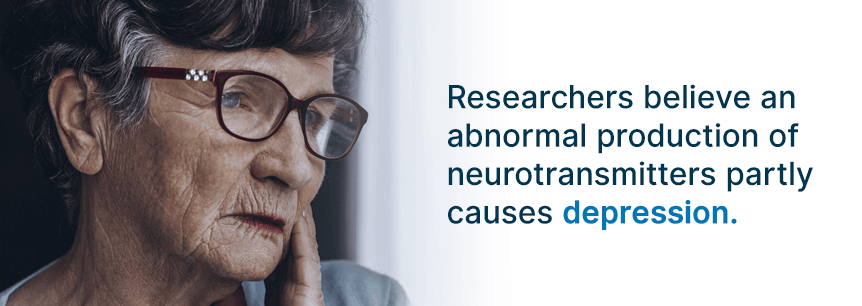
The neurotransmitters typically linked with depression are norepinephrine and serotonin. Antidepressants like serotonin-norepinephrine reuptake inhibitors (SNRIs) and selective serotonin reuptake inhibitors (SSRIs) work by acting on these two specific chemicals.
Researchers also believe a few causes of catatonia include abnormalities with gamma-aminobutyric acid (GABA), dopamine and glutamate neurotransmitter systems.
Underlying psychiatric, neurological and physical illnesses often accompany catatonia. Because of this, your doctor will need to target the underlying cause to successfully treat your catatonic symptoms.
Regardless of its underlying cause, catatonia can cause different medical complications that involve every organ system, so doctors need to be aware of, make preparations for and treat the detected conditions. Some complications that doctors can address include:
Immobility puts the individual at risk for:
Researchers have associated a wide range of other complications with catatonia, including:
Major depressive disorder or depression is a medical condition causing individuals to experience very low moods. In some cases, depression accompanies catatonia, where the individual doesn’t respond to everything around them.
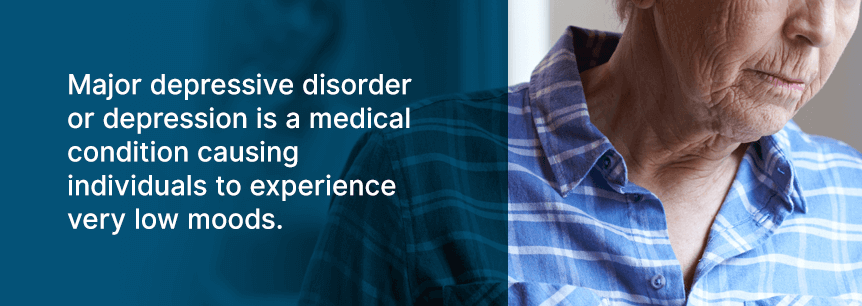
While catatonic depression was once seen as a separate condition, the American Psychiatric Association (APA) doesn’t see it as a distinct mental illness any longer. Instead, the APA now recognizes catatonia as a specifier or subcategory of other numerous mental illnesses including bipolar disorder, post-traumatic stress disorder, and depression.
Some individuals with schizophrenia may develop catatonia. With this, the person will have periods where they move very little and don’t respond to instructions. In other cases, the person demonstrates a motor activity that’s “peculiar” and “excessive,” such as mimicking others’ movements or sounds. This is known as catatonic excitement.
Statistics reported by the National Center for Biotechnology Information (NCBI) include:
Most studies on the catatonia incidence show it to be between five and 20 percent in the acute inpatient psychiatric setting. You can classify many catatonia episodes as malignant, excited or retarded. Symptoms can come and go or change during the episodes, and individuals can experience periods of excitation and periods of withdrawal.
Since its initial description, catatonia remains a poorly defined disorder marked by disturbed mood behavior originally described with severe mental illness.
Karl Ludwig Kahlbaum coined the term “catatonia” in 1874, describing a syndrome “with an alternating, cyclic course in which mental symptoms are without interruption as follows: mania, melancholy, confusion, stupor and eventually, dementia.”
Later on, Emil Kraepelin suggested catatonia be classified phenomenologically with other types of dementia praecox — paranoia and hebephrenia. Because of Eugen Bleuler’s work, the term “catatonia” became synonymous with behavioral withdrawal and immobility — a symptom often associated with schizophrenia.
Doctors may prescribe the following treatments for catatonia:
These are psychoactive drugs that enhance the GABA neurotransmitter’s effect. In most individuals, benzodiazepines are effective for fast relief of catatonic symptoms, including muscle spasms, anxiety and insomnia.
However, these medications are also incredibly addictive. Therefore physicians generally only prescribe them for short-term treatment use.
Side effects of benzodiazepines may include:
Electroconvulsive therapy (ECT) is a highly effective catatonic depression treatment. The doctor attaches electrodes to the patient’s head. These electrodes then send electrical impulses to the patient’s brain, triggering a seizure.
While ECT is an effective and safe treatment for many different mental illnesses and mood disorders, stigma still surrounds it. Because of this, it presently lags behind benzodiazepines as the primary treatment for symptoms of catatonia.
Doctors can use N-methyl-D-aspartate to treat catatonic depression. It’s also effective and is an amino acid derivative that mimics glutamate neurotransmitter behavior. While it seems to offer promise as a treatment, more studies are needed to address its side effects and effectiveness adequately.
Some of the side effects already known about include:
Other treatments showing promise are rTMS and some atypical antipsychotics, especially those blocking dopamine D2 receptors.
Several clinical trials are being conducted to study different developments in catatonia. Some of them include:
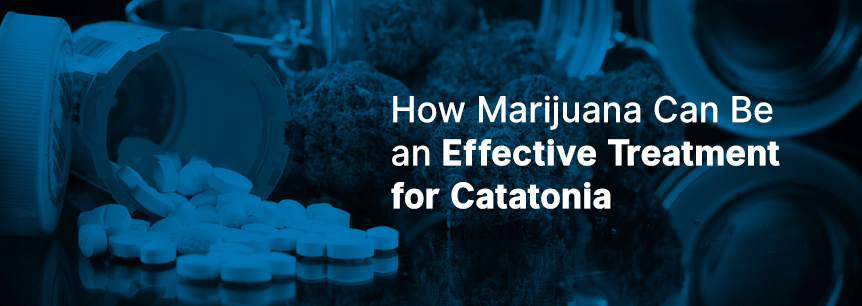
Some studies have shown promise in the use of cannabis in the treatment of catatonia. These include:
A preliminary clinical trial shows a compound found in marijuana helps to treat schizophrenia just as effectively as antipsychotic medicines, but with far fewer negative side effects.
Researchers studied 39 individuals with schizophrenia who had a psychotic episode and physicians hospitalized them. They treated 19 individuals with amisulpride, a type of antipsychotic medicine not approved in the U.S., but comparable with other drugs that are.
The researchers gave the remaining people cannabidiol (CBD), a cannabinoid in cannabis thought to have anxiety-reducing or mellowing effects. Unlike tetrahydrocannabinol (THC), the primary psychoactive component in marijuana which can make schizophrenia worse, CBD has antipsychotic effects.
Neither the patients nor the researchers knew who was receiving which treatment. The trial lasted four weeks, and once completed, both groups showed substantial improvements in their symptoms of schizophrenia — researchers saw no difference between amisulpride or CBD.
The study shows CBD was not only just as effective as antipsychotic drugs, but it doesn’t come with the standard negative side effects you see with antipsychotic medications.
A 2015 study showed medical weed used in some individuals with bipolar disorder promoted a more positive outlook and enhanced their mood.
Additionally, a 2016 study showed individuals with bipolar disorder, when using medical pot, didn’t experience substantial mental impairment compared to those with the condition who didn’t use the herb. Critics of cannabis use for bipolar disorder state it affects an individual’s memory and thinking. This was not found to be true in this study. The study found that after the bipolar patients used cannabis, they also experienced better moods.
Marijuana for catatonia could be a great addition to or an alternative to the treatment plan for Parkinson’s disease as a cause of catatonia.
Some conventional medicines doctors prescribe for a patient with Parkinson’s also come with side effects that aren’t present in cannabis. The herb does have minimal side effects, however, including:
Cannabis for catatonia provides a combination of antioxidant, anti-anxiety and pain relief all in one treatment.
Medical marijuana for catatonia can help treat many of the symptoms of catatonic depression, including:
Symptoms of catatonic schizophrenia that marijuana can treat include:
Here are some effective medical marijuana strains that can help patients with catatonia.
Although individuals with schizophrenia need to stay away from strains with THC, because it would stimulate their already excited mind, strains with CBD work well because CBD is a potent antipsychotic. It also counteracts THC’s effects. So, you’ll want to choose strains high in CBD with little to no THC.
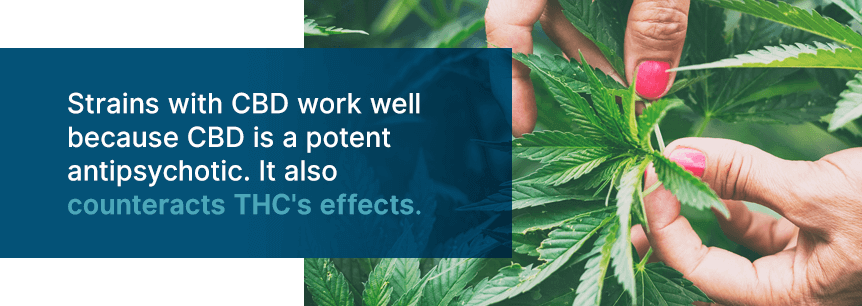
Some strains you may want to try include:
For depression, here are some strains to try:
To combat catatonia accompanying bipolar disorder, try these strains:
Here are some strains you might try for anxiety:
While most individuals connect cannabis with smoking, there are various other methods you can use to reap the medicine’s benefits. An excellent method to use for catatonia is CBD oil. It doesn’t give you any psychological effects and is low in THC. Some are purely CBD.
If you don’t want to smoke it, there are numerous other methods you can use to receive your CBD oil.
You can use your CBD oil in:
The best method for many users is CBD inhalers. For fast relief, you can vape your oil. Vaping delivers quick comfort without inhaling harmful smoke. However, if you have lung-related issues, you should avoid vaping just as you would smoking.
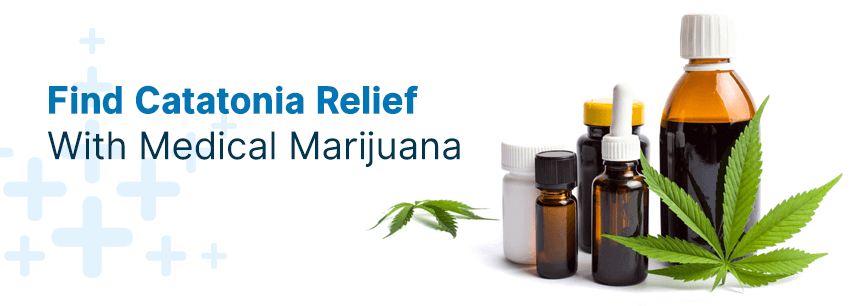
At Marijuana Doctors, our goal is to provide up-to-date, accurate information on medical marijuana as well as connect you with the resources you need to begin your medical marijuana journey. If you still have questions or concerns, we can connect you with a licensed cannabis doctor who can answer all your questions and help tailor a marijuana treatment plan to help with your catatonia symptoms. You can also find a dispensary. Book your appointment today to start feeling relief.
Find A Doctor Find A Dispensary